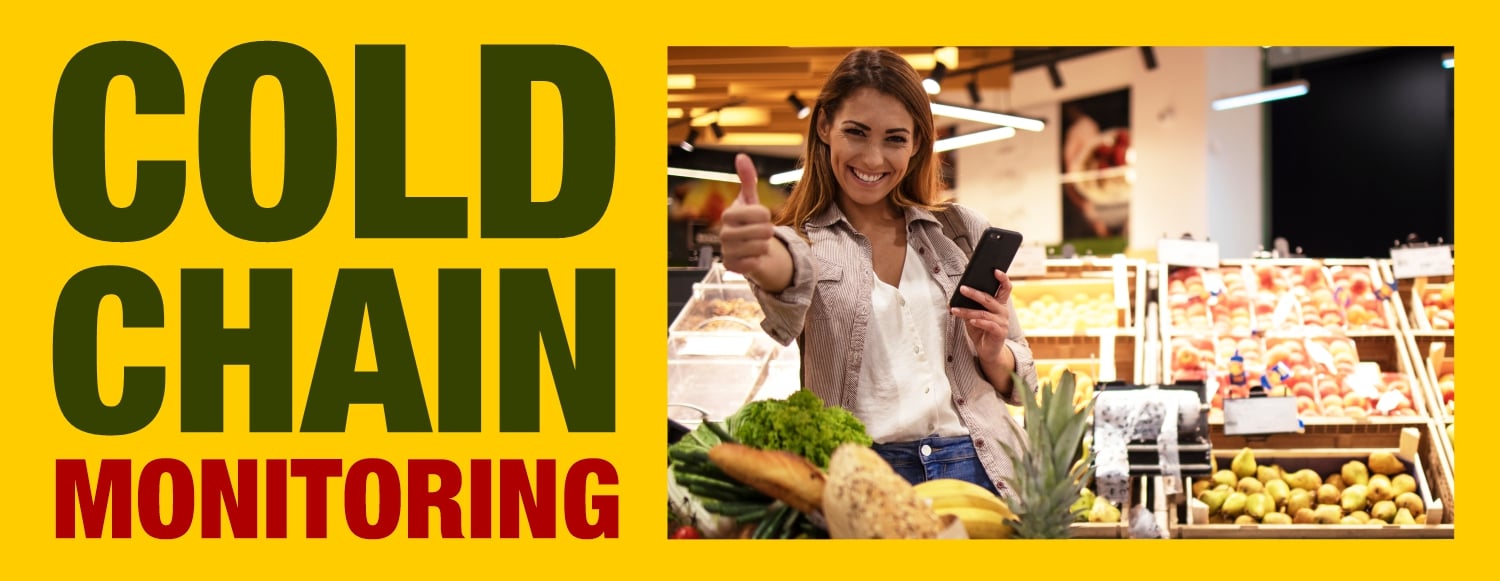Dealing with fresh produce logistics means dealing with supply chains that are more prone to risk. The risk of spoilage is an additional risk to consider beyond delay and theft. When working with fresh produce supply chains, reliable condition and location tracking data is vital to prevent the risk of spoilage that can contribute to cost in the form of replacement and reshipping — increasing the overall financial loss. Let’s explore how real-time data can help keep the fresh produce supply chain lean and reduce financial losses.
According to a BCH Henderson Institute report, over 1.6 billion tons or over $1.2 trillion worth of food is lost/wasted each year around the globe. Most of this wastage owes to mismanaged fresh produce logistics. This wasted food could help reduce world hunger, and to make this happen, investing in better fresh produce supply chains and informed decision-making is critical.
As per the analysis performed by World Resources Institute on the UN Food and Agriculture Organization’s (FAO’s) data, food wastage in developed countries is more likely to occur at the consumer level, while it is more likely to occur during the production and handling stage in developing nations. Thus, the biggest challenge for fresh produce supply chain professionals is spoilage, especially when shipping ‘from’ or ‘to’ parts of the developing world.
Let’s explore this in detail.

Challenges in Fresh Produce Logistics
The distance that fresh produce travels to reach the consumer is becoming longer. Long-distance travel, and the change in hands before the harvested produce reaches the consumer, makes it hard to retain its freshness. Moreover, multiple parties involved in arranging the transportation along the supply chain create plenty of room for coordination issues, contributing to delays.
Here are some significant challenges faced while transporting fresh produce:
1. Temperature Excursions During Transport & Transshipment
Transport losses in a fresh food cold chain are primarily related to temperature and humidity excursions, contributed by delayed/improper cooling or refrigeration equipment failure. The biggest problem here isn’t always the lack of data, but the lack of timely data that can be used to correct anomalies beforehand, preventing spoilage.
2. Damaged Packages
Improper handling and excessive vibration during transport are significant causes of damage and early spoilage in fresh produce. In fact, damaged packages are one of the leading reasons for increased cost of food logistics management.
3. Safety/Security Issues
Fresh produce logistics needs to abide by several food safety regulations, including recommendations for packaging, transportation, packing facility sanitation, warehouse regulations, and refrigeration equipment regulations, to name a few. For example, the trucks used must comply with ISO requirements and accommodate different loading requirements. Failing to comply with any of these rules rigorously at each stage in the supply chain could bring financial and legal repercussions.
4. High Maintenance Costs
The need to maintain the right conditions, ensure quality packaging, and facilitate quick transportation amplifies the cost of a fresh produce supply chains when compared to a regular one.
5. Lack of Information Sharing along the Supply Chain
When you couple these challenges with a lack of information sharing, you get unreliable forecasts, improper capacity planning, and uncertainty. Knowledge about the product and its transport conditions across the supply chain is often incomplete because information lies in the hands of various custodians of the cargo along the way. This can lead to product quality surprises upon arrival or delayed arrival of the product itself.

Some Measures That Could Address These Challenges
A clear, unbroken chain of communication throughout the supply chain is critical to manage and control fresh produce supply chains. In the recent evolution of food services, Amazon Fresh is the most prominent example of such a lean and well-controlled supply chain. Here are some measures that can contribute to your success:
1. Enhancing Information Transparency
Food loss attributable to transportation can be reduced through information transparency and a continuous flow of data across the supply chain.
2. Optimizing Maintenance
Maintenance costs arising out of substandard packaging, lack of adherence to quality standards, and mishandling during transportation can be minimized. It can be done by adding more service locations, improving on-time delivery, monitoring in real time, improving reusable packaging (if applicable), and performing thorough quality checks. These measures would reduce the overall maintenance costs and reduce the time and effort spent tackling late or damaged product delivery.
3. Gathering End-to-End Location and Condition Data
End-to-end real-time data on inventory location and package condition would bring about more transparency and better control across the supply chain.
4. Building Faster, Flexible, and Precise Supply Chains
Running a lean supply chain is a must for fresh food products. Many items (like berries) have a very short shelf life and thus benefit considerably with the slightest reduction in transit time. Predictive analytics, image recognition, and process automation offer timely alerts to improve actionability.
Fresh produce logistics professionals must focus on significant efficiency drivers in the supply chain, like reducing food wastage, minimizing costs, and ensuring better quality. An end-to-end location tracking and food condition monitoring system would enable you to gain more control over fresh produce logistics.
Let’s explore how.

How Can a Cold Chain Monitoring Solution Help?
With a well-designed on-demand cold chain monitoring solution, you will get accurate real-time data to make informed decisions. In the long term, you can use historical data trends, analytics, and insights to start predicting where excursions could occur and enable informed decision making to reduce your spoilage and damage risk in a fresh produce supply chain.
1. Reduce Spoilage during Transportation
Monitoring the location and condition of shipments in real time can help flag issues like temperature/humidity excursions, equipment malfunctions, and deviations from handling protocols (for instance, loading produce into containers that hasn’t been cooled/preconditioned). You can initiate corrective actions early and accurately predict the ETA (Estimated Time of Arrival) for downstream stock planning.
2. Reduce Damage Caused by Bad Handling
Real-time location and food condition tracking at the package level can help you reduce instances of mishandling during packaging, loading, offloading, and reloading of fresh produce into containers.
3. Reduce Operational Risks
Access to real-time location and condition data helps you avoid delays and resolve operational issues on time. It also enables you to evaluate and benchmark transport partners. Live tracking, adherence to preferred routes, and fewer instances of unexpected delays reduce operational risks. Logistics data analytics would enable you to evaluate shipment lanes, routes, freight forwarders, and carrier performance over time for enhanced decision-making.
4. Reduce Costs with Improved Supply Chain Efficiency
The smart decision for a fresh produce cold chain professional is to leverage the potential of the Internet of Things (IoT) to increase efficiency and reduce costs. With real-time monitoring and timely intervention, you can run an efficient supply chain while trimming down waste. Identifying better routes, carriers, modes of transport, and managing returnable packaging with real-time data not only reduces your operational risk, it enables you to lower costs by eliminating delays and trimming maintenance costs.
In summary
A well-designed real-time cold chain monitoring system will help fresh produce supply chain professionals improve their success through significant drivers. You can use it to eliminate food losses, reduce costs, and keep food safety regulations in check. The recent technological transformation of food supply chains has brought out innovations that drive more rapid, flexible, precise, and transparent fresh produce supply chains.
To maintain a lean supply chain, each stakeholder must meet their Service Level Agreements (SLAs). Meeting SLAs consistently is only possible if you have end-to-end visibility from the first mile to the last mile. However, just collecting data doesn't ensure a better supply chain. You require actionable data and need to use it cleverly by leveraging predictive analytics and insightful data sharing mechanisms to make prompt (and right) decisions.













